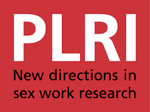Due to higher use of condoms in commercial sex and very low use with spouses, no effort was made to understand the variation in condom use with sex workers and wives. However, a logistic regression analysis was performed to understand the predictors of condom use with casual female partners. It has been found that the level of education of the study clients seems to have a significant bearing on condom use. The higher is the level of education, higher is the chance of using a condom. In case of girl friends, education also does not seem to have a significant role in explaining the variation in condom use during last sex.
Sex work has long been associated with the spread of sexually transmitted infections. By definition sex work involves transactions between vendors and purchasers. The latter – ‘clients’, vastly outnumber the women and girls who provide sex for money. Even so, much of the popular discussions of the health implications of sex work have always, rather myopically, concentrated on the role of the vendor (seller) as the possible source of infection while largely ignoring the role of those who pay for sex.
Theme:
Author:
S.K. SINGH, SUDIPTA MONDAL AND NIDHI SHARMA

